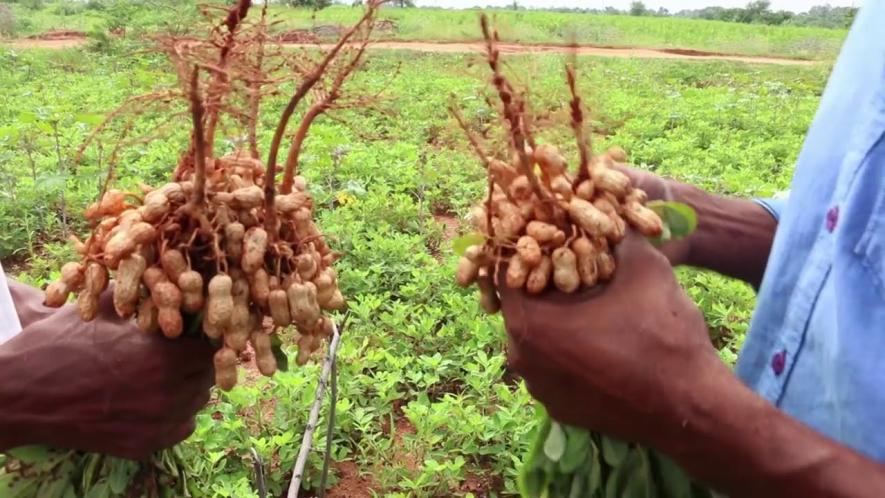Maharashtra: Low Groundnut Production Due to Unseasonal Rain Hurts Farmers and Dependent Industries

Sadashiv Kandale from Sanaswadi village of Radhanagari tehsil in Kolhapur district is a small land-holding farmer. He has 3.5 acres of land close to the outskirts of the Sahyadri mountains. He mainly sows rice, nachni (ragi) or groundnut. This year, Kandale sowed groundnut in half of his field hoping that it would give him at least 400 kg of produce. But the unseasonal rain of mid-October damaged his entire crop. He has been able to harvest only about 50 to 60 kg of groundnut.
"Last year groundnut sought a good selling price. So, I went for it this year, but with the rains, the quantity of produce has really gone down," said Kandale. He had been able to harvest 350 kg of groundnut in 2017 and had hoped to upscale it. In 2019, the price for groundnut was Rs 5700 per quintal. So, an increased production of the nut was expected.
According to the state's Agriculture Ministry, Maharashtra is the 6th largest groundnut-producing state in the country. However, its total contribution in the total production of the nut is just 5% (1,93,000 MT). In 2019, over 1,87,500 hectares of land in the state was used for groundnut production. The average production in Maharashtra is one thousand kg per hectare.
Eight districts in Maharashtra are main cultivators of groundnut: Dhule, Jalgaon, Nasik, Ahmednagar from North Maharashtra and Pune, Satara, Sangli and Kolhapur from Western Maharashtra. As the production is centred in this area, the dependent industries of animal feed and groundnut oil are also concentrated in the area.
For small land-holding farmers’ survival, the groundnut crop -- a Kharif crop -- is crucial; the income from groundnut helps the farmers to go for vegetables in the rabi cycle.
The Maharashtra government has announced a compensation of Rs 10,000 each for the farmers who have lost their crop to the heavy rain. The distribution of this monetary relief is underway.
Dr Ajit Nawale, State Secretary of All India Kisan Sabha has demanded an increase in the compensation upto Rs 50,000 per hectare. “If we assume that groundnut was cultivated on two hectares of land, the estimated production would have been 2,000 to 2,200 kg. If we go by the 2019 prices, the farmers would have earned Rs 50,000 per hectare,” explained Nawale.
"The amount of Rs 10,000 is very low. The people sitting in the government claimed that they knew the farmers’ difficulties. But it is not being reflected in the amount of compensation," he added.
Koregaon Farm Oil is a small setup of seed oil in Satara's Koregaon tehsil. The owner, Avinash Sarode, has been in the business for 10 years. He told NewsClick that the reduced production of groundnut is expected to hurt his business. "I will have to bring groundnut from Andhra or Gujarat this year. So, the cost of oil will increase. Before, the mill was closed for almost two and a half months. Now, I have to deal with this issue," he said.
"The feed from groundnut is healthy for the animals. It increases the quality of FAT into milk. The less production will definitely impact the animal feed industry in the state," said senior journalist and an agriculture expert, Pandurang Mhaske Patil.
Also read: Rail Blockade in Punjab: Farmers' Bodies Stick to Demands, Talks with Centre Remain 'Inconclusive'
Get the latest reports & analysis with people's perspective on Protests, movements & deep analytical videos, discussions of the current affairs in your Telegram app. Subscribe to NewsClick's Telegram channel & get Real-Time updates on stories, as they get published on our website.
























